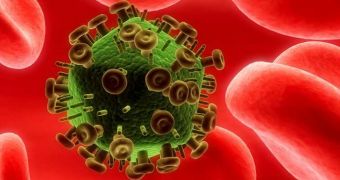Scientists writing in today's issue of the journal Nature say that they have finally managed to decode the structure of the HIV's protein shell.
Information collected while analyzing the make-up of this shell, which is also known as a capsid, is expected to help specialists roll out better treatment options for patients infected with this virus.
“The capsid is critically important for HIV replication, so knowing its structure in detail could lead us to new drugs that can treat or prevent the infection,” study senior author Peijun Zhang explains.
What the researcher means is that figuring out methods to toy with the structure of this shell could prove an efficient way to tackle this virus.
“The capsid has to remain intact to protect the HIV genome and get it into the human cell, but once inside it has to come apart to release its content so that the virus can replicate.”
“Developing drugs that cause capsid dysfunction by preventing its assembly or disassembly might stop the virus from reproducing,” Dr. Perjun Zhang further details.

 14 DAY TRIAL //
14 DAY TRIAL //